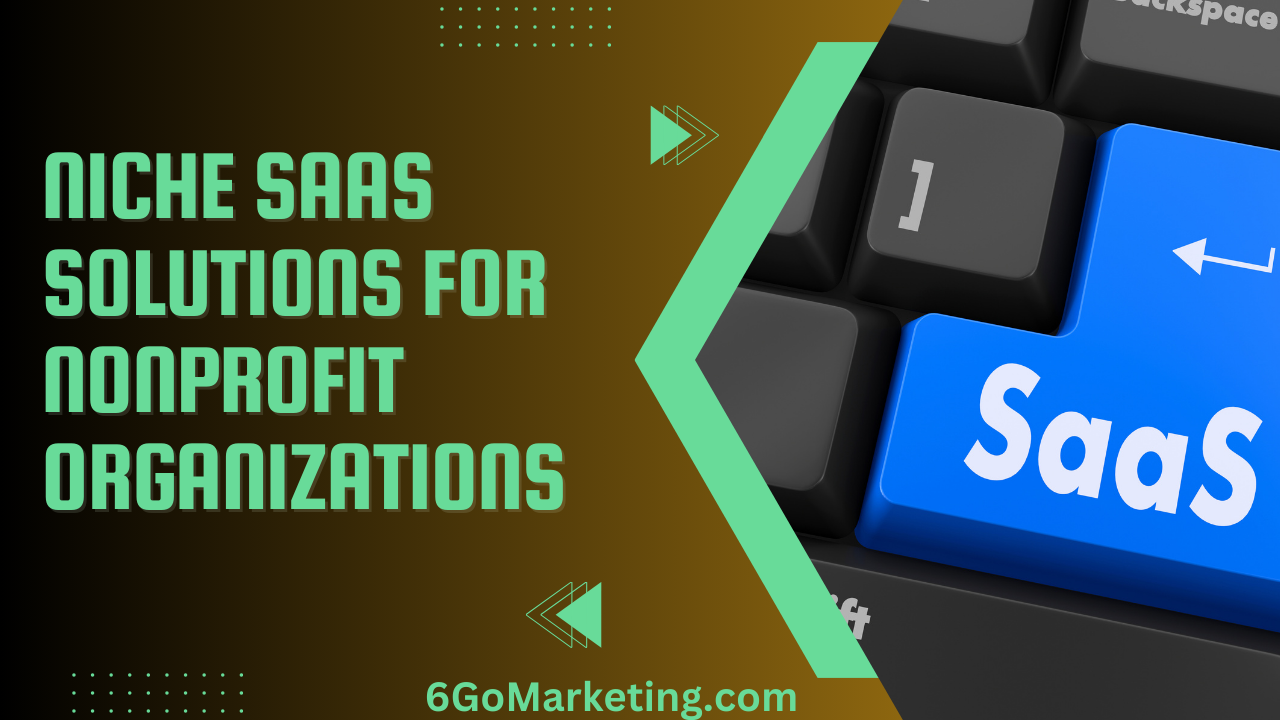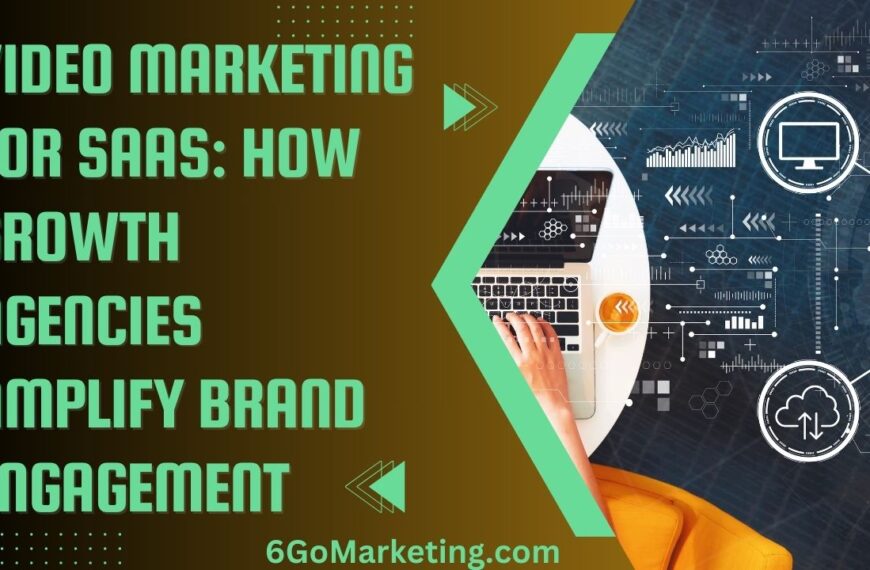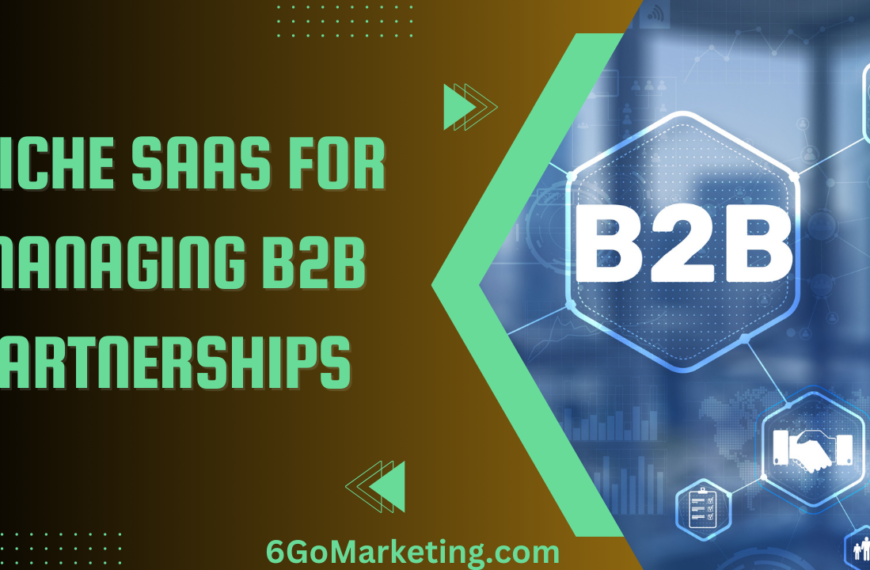Nonprofit organizations face unique challenges that distinguish them from for-profit businesses. Limited budgets, the need for volunteer management, and the goal of making a social impact rather than a financial profit are just a few factors that make running a nonprofit distinct. To address these specific challenges, Software as a Service (SaaS) solutions tailored to nonprofit organizations have emerged, helping nonprofits streamline their operations, manage resources effectively, and achieve their missions with greater efficiency.
In this blog post, we’ll explore the niche SaaS solutions for nonprofit organizations, focusing on how these tools can help with donor management, volunteer coordination, fundraising, and impact tracking. We will highlight key features, benefits, and practical applications of these SaaS platforms and provide real-world examples of how nonprofits are using these solutions to drive success.
Why Nonprofit Organizations Need SaaS Solutions
Nonprofit organizations are driven by a mission, and their success depends on how effectively they can manage resources, engage donors and volunteers, and measure the impact of their work. Traditional software systems can be costly and complex to maintain, which can strain the limited budgets of nonprofits. SaaS solutions offer an affordable and scalable alternative, allowing organizations to access cutting-edge technology without significant upfront investments.
Key Benefits of SaaS Solutions for Nonprofits
- Cost-Effectiveness: SaaS platforms are typically subscription-based, allowing nonprofits to access powerful tools without the need for expensive hardware or software licenses. This is particularly beneficial for organizations with tight budgets.
- Scalability: SaaS solutions can grow with the organization, making it easy to add new users or features as the nonprofit expands.
- Remote Access: Since SaaS platforms are cloud-based, they can be accessed from anywhere, enabling remote teams to collaborate effectively.
- Automation of Administrative Tasks: SaaS platforms can automate many administrative functions such as donor tracking, email campaigns, and reporting, freeing up time for nonprofits to focus on their mission.
- Data Security: SaaS providers typically offer robust security features to protect sensitive information, including donor data, ensuring compliance with regulations like GDPR and HIPAA.
Quote: “Nonprofits thrive on maximizing resources, and SaaS solutions are a game-changer in helping them do more with less.” — John Williams, Nonprofit Technology Expert
Example Table: Key Benefits of SaaS Solutions for Nonprofits
| Benefit | Description | Importance for Nonprofits |
|---|---|---|
| Cost-Effectiveness | Affordable access to powerful tools | Saves on upfront costs, ideal for tight budgets |
| Scalability | Easily add features and users as needed | Supports growth without complexity |
| Remote Access | Access from anywhere, cloud-based | Enables remote collaboration and flexibility |
| Automation | Automates administrative tasks | Saves time, increases efficiency |
| Data Security | Ensures protection of sensitive donor information | Maintains compliance, builds donor trust |
Top Niche SaaS Solutions for Nonprofit Organizations
There are several niche SaaS platforms designed to address the unique needs of nonprofit organizations. These solutions focus on donor management, volunteer coordination, fundraising, event management, and more. Below are some of the leading SaaS solutions that nonprofits can leverage to improve their operations and drive impact.
1. Donor Management: Bloomerang
Bloomerang is a popular donor management SaaS solution designed specifically for nonprofit organizations. It helps nonprofits track donor relationships, manage fundraising campaigns, and measure donor engagement.
Key Features of Bloomerang:
- Donor Database: Bloomerang provides a comprehensive database for storing donor information, tracking donations, and managing donor relationships.
- Donor Retention Metrics: One of Bloomerang’s standout features is its ability to track donor retention rates, allowing nonprofits to focus on retaining existing donors, which is often more cost-effective than acquiring new ones.
- Email Marketing Integration: Bloomerang integrates with email marketing tools, enabling nonprofits to send personalized communications to donors based on their giving history and preferences.
Benefits of Bloomerang for Nonprofits:
- Increases donor retention through engagement tracking
- Streamlines fundraising campaigns with built-in tools for email marketing
- Provides detailed analytics and reports to measure fundraising success
Example Table: Key Features of Bloomerang for Donor Management
| Feature | Description | Benefit to Nonprofits |
|---|---|---|
| Donor Database | Centralized database for tracking donations | Simplifies donor management, improves organization |
| Donor Retention Metrics | Measures donor retention rates | Helps nonprofits focus on retaining valuable donors |
| Email Marketing Integration | Integrates with email platforms for campaigns | Facilitates personalized donor communications |
2. Volunteer Management: VolunteerHub
VolunteerHub is a SaaS solution built to manage volunteers for nonprofit organizations. From recruitment to scheduling and tracking, VolunteerHub simplifies the entire volunteer management process.
Key Features of VolunteerHub:
- Volunteer Recruitment: VolunteerHub allows nonprofits to create and promote volunteer opportunities, making it easy for individuals to sign up for shifts.
- Scheduling and Event Management: The platform provides tools for scheduling volunteers and managing events, ensuring that organizations have the right volunteers at the right time.
- Attendance Tracking: VolunteerHub includes built-in tools to track volunteer hours and attendance, making it easy to generate reports for grant applications or recognition programs.
Benefits of VolunteerHub for Nonprofits:
- Streamlines the volunteer recruitment process with a user-friendly interface
- Reduces the time spent on manual scheduling and tracking of volunteer hours
- Improves communication with volunteers through automated reminders and updates
Example Table: Features of VolunteerHub for Volunteer Management
| Feature | Description | Benefit to Nonprofits |
|---|---|---|
| Volunteer Recruitment | Promotes volunteer opportunities online | Simplifies recruitment, attracts more volunteers |
| Scheduling and Event Management | Tools for organizing volunteer shifts and events | Ensures adequate volunteer staffing, reduces scheduling conflicts |
| Attendance Tracking | Monitors volunteer hours and participation | Provides accurate records for grants and recognition |
3. Fundraising: Classy
Classy is a SaaS fundraising platform designed to help nonprofits run online fundraising campaigns, events, and peer-to-peer fundraising initiatives. With a focus on modern, user-friendly interfaces, Classy makes it easy for nonprofits to engage donors and raise funds online.
Key Features of Classy:
- Crowdfunding and Peer-to-Peer Fundraising: Classy enables nonprofits to create crowdfunding campaigns and leverage peer-to-peer fundraising, where supporters raise money on behalf of the organization.
- Event Management: Classy offers event registration and ticketing tools, making it easy for nonprofits to host fundraising events, both online and in-person.
- Donation Pages: The platform provides customizable donation pages that can be tailored to match the nonprofit’s branding and campaign goals.
Benefits of Classy for Nonprofits:
- Empowers supporters to fundraise on behalf of the organization through peer-to-peer campaigns
- Simplifies event management with built-in ticketing and registration tools
- Enhances donor experience with customizable, mobile-friendly donation pages
Example Table: Key Features of Classy for Fundraising
| Feature | Description | Benefit to Nonprofits |
|---|---|---|
| Crowdfunding and Peer-to-Peer Fundraising | Tools for online and peer fundraising | Expands donor reach, increases fundraising potential |
| Event Management | Built-in tools for managing fundraising events | Simplifies event registration, improves attendee experience |
| Donation Pages | Customizable donation pages for campaigns | Improves donor experience, enhances brand consistency |
4. Grant Management: Foundant Technologies
Foundant Technologies offers SaaS solutions for grant management, helping nonprofits manage the grant application and reporting process. Its products are designed to streamline both the search for grants and the management of awarded grants.
Key Features of Foundant Technologies:
- Grant Application Tracking: Foundant Technologies allows nonprofits to track grant applications and deadlines, ensuring that no opportunity is missed.
- Reporting Tools: The platform offers detailed reporting features, helping nonprofits generate reports for grantmakers, track outcomes, and demonstrate impact.
- Donor and Funder Database: Foundant includes a database of grantmakers and funders, making it easier for nonprofits to find and apply for relevant funding opportunities.
Benefits of Foundant Technologies for Nonprofits:
- Simplifies the process of applying for and managing grants, saving time and reducing administrative burdens
- Provides comprehensive reporting tools to demonstrate impact to funders
- Offers a centralized system for tracking deadlines, applications, and outcomes
Example Table: Features of Foundant Technologies for Grant Management
| Feature | Description | Benefit to Nonprofits |
|---|---|---|
| Grant Application Tracking | Tracks applications, deadlines, and requirements | Prevents missed deadlines, improves application success |
| Reporting Tools | Tools for generating impact and outcome reports | Demonstrates accountability to funders, increases grant renewals |
| Donor and Funder Database | Access to grantmakers and funding opportunities | Expands potential funding sources, streamlines research |
5. Nonprofit CRM: Salesforce Nonprofit Cloud
Salesforce Nonprofit Cloud is a comprehensive SaaS CRM solution tailored to the needs of nonprofit organizations. It provides tools for managing relationships with donors, volunteers, and other stakeholders, while also offering robust analytics and automation features.
Key Features of Salesforce Nonprofit Cloud:
- Constituent Relationship Management (CRM): The platform helps nonprofits manage relationships with all stakeholders, from donors to volunteers, providing a 360-degree view of interactions.
- Fundraising and Campaign Management: Salesforce Nonprofit Cloud offers advanced tools for managing fundraising campaigns, tracking donations, and automating outreach efforts to donors.
- Analytics and Reporting: Salesforce provides powerful analytics tools, allowing nonprofits to generate detailed reports on donor activity, campaign performance, and overall fundraising effectiveness.
Benefits of Salesforce Nonprofit Cloud for Nonprofits:
- Centralizes donor, volunteer, and stakeholder information, improving relationship management
- Automates fundraising and communication efforts, increasing operational efficiency
- Provides data-driven insights through detailed analytics, enabling better decision-making
Example Table: Features of Salesforce Nonprofit Cloud for Nonprofits
| Feature | Description | Benefit to Nonprofits |
|---|---|---|
| Constituent Relationship Management (CRM) | Manages relationships with donors and volunteers | Improves stakeholder engagement, streamlines interactions |
| Fundraising and Campaign Management | Tools for running and tracking fundraising campaigns | Enhances fundraising efficiency, increases donations |
| Analytics and Reporting | Detailed insights into donor behavior and campaign success | Enables data-driven decisions, improves future campaigns |
Challenges Faced by Nonprofits and How SaaS Solutions Address Them
Nonprofit organizations often face a variety of operational and financial challenges, including limited resources, difficulty in maintaining donor engagement, and managing complex projects with minimal staff. SaaS solutions can help overcome these challenges by providing affordable, scalable, and user-friendly tools that simplify management processes and boost overall efficiency.
1. Limited Resources and Budget Constraints
Many nonprofits operate on tight budgets, which makes it difficult to invest in advanced technology. SaaS solutions address this issue by offering affordable, subscription-based pricing models that eliminate the need for expensive hardware and software.
How SaaS Helps:
- Subscription Pricing: SaaS platforms typically offer tiered pricing options, allowing nonprofits to choose the features they need at a price they can afford.
- Scalability: As nonprofits grow, SaaS solutions can scale to meet their evolving needs without requiring costly upgrades.
2. Managing Donor Relationships and Engagement
Maintaining strong relationships with donors is crucial for nonprofit success, but it can be difficult to manage these relationships without a dedicated system. SaaS CRM solutions help nonprofits track donor interactions, automate communication, and personalize outreach efforts.
How SaaS Helps:
- Automated Communication: SaaS CRMs like Salesforce Nonprofit Cloud or Bloomerang allow nonprofits to automate thank-you emails, newsletters, and updates, ensuring timely and consistent communication with donors.
- Donor Segmentation: SaaS platforms enable nonprofits to segment donors based on giving history, engagement levels, or preferences, allowing for more personalized and effective outreach.
3. Volunteer Coordination
Volunteers are the backbone of many nonprofits, but managing a large group of volunteers can be challenging. SaaS solutions like VolunteerHub make it easier to schedule, track, and communicate with volunteers, ensuring that nonprofits have the support they need when they need it.
How SaaS Helps:
- Volunteer Scheduling: SaaS platforms provide automated scheduling tools that help nonprofits assign volunteers to the right shifts or events.
- Attendance Tracking: Tools like VolunteerHub track volunteer hours and participation, making it easier to recognize volunteers and report on their contributions.
4. Fundraising and Event Management
Fundraising is critical for nonprofit sustainability, but organizing campaigns and events can be labor-intensive. SaaS solutions like Classy and Salesforce Nonprofit Cloud provide the tools nonprofits need to run online and in-person fundraising events, manage donor contributions, and track campaign performance.
How SaaS Helps:
- Online Fundraising: Platforms like Classy enable nonprofits to launch crowdfunding and peer-to-peer fundraising campaigns, expanding their donor base and increasing fundraising potential.
- Event Registration: SaaS tools simplify the event management process by offering registration, ticketing, and communication features, making it easier to host successful fundraising events.
Example Table: Nonprofit Challenges and SaaS Solutions
| Challenge | Description | SaaS Solution Example |
|---|---|---|
| Limited Resources and Budget | Difficulty affording advanced technology | SaaS subscription models reduce upfront costs |
| Managing Donor Relationships | Tracking donor interactions and engagement | SaaS CRM platforms like Bloomerang and Salesforce |
| Volunteer Coordination | Scheduling and managing volunteer participation | VolunteerHub automates scheduling and tracking |
| Fundraising and Event Management | Organizing successful campaigns and events | Classy provides tools for online fundraising and event management |
Best Practices for Implementing SaaS Solutions in Nonprofits
To fully leverage the benefits of SaaS solutions, nonprofits must adopt best practices when implementing and using these platforms. Below are some key strategies to ensure successful integration and use of SaaS technology in a nonprofit setting.
1. Choose the Right SaaS Platform for Your Needs
Not all SaaS platforms are created equal, and it’s important to select a solution that aligns with your nonprofit’s specific needs and goals. Consider factors such as the size of your organization, the types of campaigns or programs you run, and your budget when choosing a SaaS provider.
Best Practice:
- Assess Needs and Prioritize Features: Before selecting a platform, conduct an internal assessment to identify the features that are most important for your organization. For example, a small nonprofit might prioritize donor management features, while a larger organization may need advanced reporting and analytics.
2. Provide Adequate Training for Staff and Volunteers
SaaS solutions are powerful tools, but they can only be effective if staff and volunteers know how to use them. Providing adequate training ensures that your team can fully leverage the platform’s capabilities.
Best Practice:
- Invest in Training Programs: Many SaaS providers offer training resources or onboarding sessions. Take advantage of these to ensure that your team understands how to use the platform effectively.
3. Regularly Review and Analyze Data
One of the major advantages of SaaS platforms is their ability to generate detailed reports and analytics. Regularly reviewing this data can provide valuable insights into your nonprofit’s performance, donor engagement, and fundraising success.
Best Practice:
- Data-Driven Decision Making: Use the insights generated by your SaaS platform to make informed decisions about future campaigns, volunteer initiatives, and donor outreach efforts.
4. Ensure Data Privacy and Security
Nonprofits often handle sensitive donor information, so it’s crucial to ensure that any SaaS solution you use complies with data privacy regulations such as GDPR or CCPA. Make sure the platform offers robust security features, such as encryption and multi-factor authentication.
Best Practice:
- Regular Security Audits: Conduct regular security audits to ensure that your SaaS platform is compliant with privacy regulations and that donor data is secure.
Example Table: Best Practices for Implementing SaaS Solutions in Nonprofits
| Best Practice | Description | Importance for Nonprofits |
|---|---|---|
| Choose the Right SaaS Platform | Select a platform that aligns with your goals | Ensures the solution meets the organization’s needs |
| Provide Adequate Training | Train staff and volunteers on platform use | Maximizes the effectiveness of the SaaS tool |
| Regularly Review Data | Analyze reports and insights for decision-making | Improves campaign performance, boosts efficiency |
| Ensure Data Privacy and Security | Protect sensitive donor information | Maintains compliance, builds trust with donors |
Conclusion
SaaS solutions tailored for nonprofit organizations offer powerful tools to streamline operations, improve donor and volunteer engagement, and enhance fundraising efforts. With platforms like Bloomerang for donor management, VolunteerHub for volunteer coordination, and Classy for fundraising, nonprofits can leverage affordable and scalable technology to better achieve their missions.
By carefully selecting the right SaaS platform, providing thorough training, and regularly analyzing data, nonprofits can optimize their operations, improve efficiency, and make data-driven decisions that lead to greater impact. As technology continues to evolve, SaaS solutions will play an increasingly important role in helping nonprofits navigate challenges and maximize their resources to drive social change.
Quote: “The right SaaS solution can transform how nonprofits operate, freeing up time and resources to focus on what matters most: making a positive impact.” — Maria Rodriguez, Nonprofit Operations Consultant
In an environment where resources are often limited, SaaS platforms provide the flexibility, scalability, and affordability that nonprofits need to thrive. By embracing these tools, nonprofit organizations can continue to serve their communities more effectively, secure the funding they need, and make meaningful progress toward their missions.










